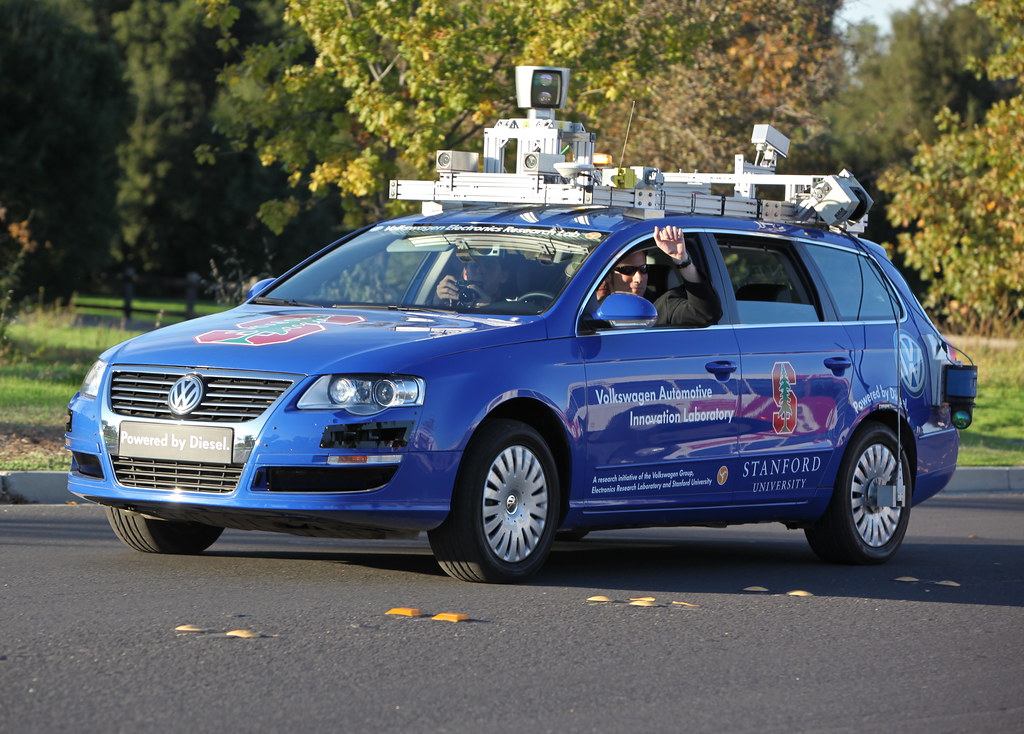
The roads we travel are constantly evolving, and with that evolution comes a necessary adaptation of the rules that govern them. As of July 21, 2025, and throughout the upcoming year, significant new driver’s license rules and traffic laws are making headlines across the United States. These updates, varying from state-specific mandates to broader safety initiatives, aim to enhance road safety, address modern challenges, and ensure all drivers are better prepared for the complexities of today’s highways.
Understanding these changes is crucial for every motorist, whether you’re a parent of a teen driver, a seasoned long-haul commuter, or a senior looking to renew your license. The landscape of driver’s license regulations is diverse, given that the federal government does not regulate private licenses, leaving each state to set its own requirements for issuance, renewal, and restrictions. This article will dive into a series of these verified updates, debunking myths and providing clarity on what these rules mean for you, ensuring you’re well-equipped to navigate the road ahead.
From comprehensive training for young drivers to the integration of cutting-edge technology and a clearer stance on autonomous vehicles, these new laws reflect a broader push for road safety. We’ll explore key legislative shifts and their implications, offering actionable insights for how drivers can proactively prepare. Let’s embark on this journey to unpack the latest developments designed to foster a safer and more informed driving environment for everyone.

1. **Florida’s Stricter Teen Driver Licensing Requirements (Effective July 1, 2025)**Florida is making a significant move to ensure its youngest drivers are among the most prepared on the road. Beginning July 1, 2025, the Sunshine State is implementing stricter requirements for teen drivers aged 15-17, as outlined in Statute 322.1615, signed into law by Governor Ron DeSantis. These comprehensive changes are designed to provide young motorists with more robust training and supervised experience before they earn full driving privileges. The goal is clear: to reduce teen crash rates through more thorough preparation.
Under the new statute, teen drivers are now mandated to complete a 50-hour Driver Education/Traffic Safety Classroom course. This is a substantial addition to the existing four-hour Traffic Law and Substance Abuse Education (TLSAE) course, signaling a commitment to broader educational foundations for new drivers. The Florida Department of Highway Safety and Motor Vehicles (FLHSMV) will approve these courses, ensuring they meet rigorous standards for comprehensive training. This structured approach aims to instill deeper knowledge and safer habits from the outset of a teen’s driving journey.
Beyond classroom instruction, the law also beefs up the supervised driving requirements. Teens must log 50 hours of supervised driving, with a minimum of 10 hours conducted at night. This practice must occur with a licensed adult over 21 years old occupying the front passenger seat. This extended period of supervised practice, particularly in varied conditions like nighttime driving, is critical for developing real-world driving skills and decision-making capabilities under the watchful eye of an experienced driver.
Furthermore, Florida is introducing new curfew restrictions for young drivers. Those aged 15-16 will be prohibited from driving past 10:00 PM, while 17-year-olds face restrictions after 1:00 AM. These curfews are intended to limit driving during periods that often present higher risks, such as late-night hours when visibility is reduced and fatigue can be a factor. The state also mandates vision and hearing screenings for teen drivers, alongside requiring parental consent for learners’ permits, underscoring a holistic approach to ensuring young drivers are fully ready for the road. Parents and teens are strongly advised to consult the FLHSMV website for a list of approved courses and details on scheduling road tests to ensure compliance.

2. **Ohio’s New Driver’s Education Mandate for Young Adults (Effective July 1, 2025 and September 30)**
Ohio is also taking a firm stance on ensuring its young drivers receive proper training. The state’s massive 2025 budget bill includes a significant change impacting teen drivers, effective July 1, 2025. This new rule stipulates that teens who do not complete a driver’s education course will now have to wait until they turn 21 years old to obtain a driver’s license. This measure is designed to strongly encourage participation in structured training programs, which have consistently demonstrated effectiveness in reducing crash rates among young drivers.
Further emphasizing this commitment to comprehensive training, additional details emerge for young adults learning to drive. Beginning on September 30, the new law requires these drivers to complete 50 hours of practice under adult supervision, with 10 of those hours specifically dedicated to nighttime driving. This practical experience is supplemented by a requirement for eight hours of driving instruction with a certified instructor and twenty-four hours of classroom instruction. The goal is to make young drivers safer and more experienced, moving away from previous expedited routes to licensure.
Ohio’s graduated driver’s licensing system remains a key component, ensuring teens progress through learner’s permits and restricted licenses before earning a full, unrestricted license. This multi-stage approach is foundational to developing responsible drivers over time. The decision to mandate driver’s education or delay licensing until age 21 reflects Ohio’s prioritization of safety over mere convenience, a response to recent increases in crash rates involving young drivers.
Parents play a critical role in this new landscape, needing to ensure their teens enroll in approved driver’s education courses to avoid significant delays in obtaining a license. The investment in these courses, which can cost up to $400, is positioned as an essential step toward fostering a generation of safer, more skilled drivers. This legislative push highlights a statewide commitment to foundational training, acknowledging that robust preparation is the best defense against the inherent risks of the road for inexperienced drivers.

3. **North Carolina’s Extended License Renewal Period (Effective July 1, 2025)**In a move aimed at alleviating the persistent issue of long wait times at Department of Motor Vehicles (DMV) offices, North Carolina is implementing a new, temporary measure. Effective July 1, 2025, a new law allows drivers with licenses expiring on or after this date to renew within a two-year window. This provision, part of Senate Bill 391, is a direct response to the operational challenges faced by the DMV, which have often led to wait times stretching up to three and a half hours for residents.
It is important for drivers to understand the specifics of this extension. This temporary measure applies exclusively to Class 3 licenses, which are standard passenger vehicle licenses. Crucially, it does not extend to licenses that are suspended, revoked, or to REAL ID licenses that are valid for eight years or more. This distinction is vital, as individuals with these specific types of licenses must still adhere to their regular renewal schedules and processes without the benefit of the grace period.
While the law grants a continued driving privilege with an expired license until December 2027, drivers must be aware of potential limitations. An expired ID, even with this extension, may not be accepted for non-driving purposes. This could impact activities such as boarding flights, purchasing age-restricted items like alcohol, or even practical necessities like insurance renewals and job applications. Therefore, while the extension provides breathing room for driving, it does not fully negate the need for a current, valid form of identification.
Legislators are actively pushing for more DMV staff and offices to address the underlying causes of the backlogs, recognizing that this two-year grace period is a stopgap solution. Drivers are strongly encouraged to renew their licenses promptly, even with the extension, to avoid any issues with non-driving ID uses. The North Carolina DMV website offers wait-time trackers and appointment availability, providing valuable tools for planning renewals efficiently and minimizing inconvenience.

4. **Virginia’s Mandatory Seat Belt Law for All Passengers (Effective July 1, 2025)**Virginia is enhancing its commitment to road safety with several important updates, including a significant change to its seat belt laws. Effective July 1, 2025, House Bill 2475 will mandate that all adult passengers, including those seated in the back seat, must wear seat belts on public highways. This marks an expansion of previous regulations, making Virginia’s seat belt law more comprehensive and aligned with best practices for occupant safety. The Virginia DMV’s official notice and guidance page confirm this critical change.
This update underscores a universal understanding that seat belts are the most effective safety devices in a vehicle, crucial for protecting occupants in the event of a crash. Historically, many states had less stringent requirements for back-seat passengers, but data consistently shows that unbelted rear passengers can pose a risk not only to themselves but also to belted front occupants. By requiring all adults to buckle up, Virginia aims to reduce injuries and fatalities for everyone in the vehicle.
The implementation of this law is a clear signal of Virginia’s dedication to improving overall road safety. Drivers and passengers alike should familiarize themselves with this expanded mandate to ensure full compliance and avoid potential fines. The message is straightforward: whether you’re in the front seat or the back, a seat belt is now a mandatory piece of safety equipment for all adults traveling on Virginia’s public roads.
Beyond seat belts, Virginia’s new laws, passed during the 2025 legislative session, include other driver-related changes aimed at improving road safety and inclusivity. For instance, new rules around pedestrian safety and autism-friendly DMV tools are also coming into effect, showcasing a holistic approach to traffic management and public interaction. However, the seat belt mandate stands out as a direct and impactful change for the vast majority of drivers and their passengers, emphasizing prevention as a cornerstone of traffic safety.

5. **Debunking Federal Senior Driver License Rumors (Ongoing Clarification)**In the age of rapid information dissemination, separating fact from fiction has become more critical than ever, especially when it concerns widely held beliefs about driving laws. A persistent rumor has been circulating online, particularly amplified on social media platforms like X (formerly Twitter) and Facebook, claiming that new federal driver’s license rules will take effect in July or August 2025. These rumors suggest that drivers aged 70 and older would be required to undergo mandatory vision, cognitive, and road tests, ostensibly mandated by the U.S. Department of Transportation (USDOT).
However, it is crucial to clarify that these claims are entirely false. Multiple reputable sources, including Snopes and AL.com, have thoroughly debunked this widespread misinformation. The foundational truth is that the USDOT simply does not regulate private driver’s licenses; the authority to control licensing rules, including those for senior drivers, rests exclusively with individual states. There has been no federal law or regulation proposed or passed in Congress, nor has anything been published in the Federal Register to support such a mandate.
The origins of this rumor can be traced back to dubious websites, often featuring AI-generated articles from platforms like The Licking News and Sheffield Stories from the Pandemic. These articles frequently employ misleading images of public figures to lend a false sense of credibility. The misinformation likely gained traction partly due to Illinois’ real, state-specific announcement to raise the mandatory driving test age for license renewals from 79 to 87, effective July 1, 2026, if signed by Governor JB Pritzker. This actual state change inadvertently fueled the false narrative of a national law.
For seniors nationwide, the takeaway is clear: ignore unverified social media claims and always consult your specific state’s Department of Motor Vehicles (DMV) website for accurate and up-to-date renewal requirements. Staying informed through official channels is the best defense against confusion and unnecessary stress. While individual states may implement their own requirements for older drivers, there is no overarching federal mandate dictating tests based on age, reassuring many who might have been concerned by these pervasive online rumors.

6. **Florida’s New “Dangerous Excessive Speeding” Crime (Effective July 1, 2025)**Florida is introducing a stringent new measure to combat extreme speeders on its roads, elevating dangerous driving to a criminal offense. As of July 1, 2025, the state will implement a new “dangerous excessive speeding” crime under House Bill 351. This law targets drivers who significantly exceed posted speed limits, specifically those caught speeding 50 miles per hour or more over the limit, or driving at speeds of 100 miles per hour or greater, regardless of the posted limit. Such offenses can now trigger criminal penalties and necessitate a mandatory hearing.
This new legislation reflects Florida’s heightened focus on deterring reckless driving behaviors that pose extreme risks to public safety. Traditional speeding tickets often result in fines and points on a license, but this new classification signals a more severe legal consequence for egregious violations. The criminal penalties associated with this law could include substantial fines, longer license suspensions, and potentially even jail time, depending on the circumstances and prior driving record.
The mandatory hearing aspect means that individuals accused of dangerous excessive speeding will face a formal judicial process, rather than simply paying a fine. This provides an opportunity for courts to assess the severity of the offense, consider any mitigating or aggravating factors, and impose appropriate sanctions designed to both punish the offender and prevent future recurrences. It’s a clear message that Florida takes extreme speeding with the utmost seriousness, recognizing its direct correlation with severe accidents and fatalities.
This amendment is part of a broader effort by the Florida Senate and other state agencies to enhance road safety. Alongside existing measures like the expanded “Move Over” law, which covers more roadside situations, this new speeding crime aims to create a safer environment for all road users. Drivers in Florida must be acutely aware of this significant change, as the consequences of pushing the speed limit too far have now become substantially more severe, emphasizing responsible driving as a paramount expectation.

7. **Texas’ Authorization Requirement for Driverless Commercial Operations (Effective Sept 1, 2025)**
The future of transportation is increasingly leaning towards autonomous vehicles, and Texas is proactively establishing a regulatory framework for their commercial deployment. Starting September 1, 2025, new legislation (Senate Bill 2807) will require companies to obtain specific state authorization to operate without a human driver in commercial service. This marks a critical step in integrating driverless technology safely and effectively into the state’s transportation ecosystem. The statute also introduces enforcement tools and sets timelines for rulemaking, indicating a comprehensive approach to this evolving field.
This requirement signals a structured approach to a technology that is rapidly developing. Rather than allowing unfettered deployment, Texas is ensuring that commercial operations of autonomous vehicles (AVs) are subject to rigorous oversight. This authorization process will likely involve detailed reviews of a company’s technology, safety protocols, operational plans, and demonstrated performance. The goal is to safeguard public roads while still allowing for the innovation and potential benefits that AVs promise, such as improved efficiency and reduced accidents caused by human error.
A key component of this new law is the requirement for companies to provide first-responder interaction plans. This is a crucial element for public safety, addressing how law enforcement, firefighters, and emergency medical personnel will interact with and manage autonomous vehicles during incidents or emergencies. Clear communication and protocols are essential to ensure that responders can safely and effectively handle situations involving driverless vehicles, which operate differently from traditional human-driven cars.
The legislation reflects a forward-thinking perspective on the challenges and opportunities presented by autonomous technology. By establishing clear guidelines and a formal authorization process, Texas aims to foster responsible innovation while maintaining paramount importance on public safety. Companies looking to deploy driverless commercial operations in Texas will need to engage closely with state authorities to ensure full compliance, demonstrating that the future of mobility in the Lone Star State will be both technologically advanced and securely regulated.
Navigating the complexities of state driving laws requires constant vigilance, and as we look ahead, even more impactful changes are taking shape across the nation. These legislative adjustments reflect a broader commitment to public safety, addressing concerns from distracted driving to the integration of advanced technology. Continuing our comprehensive overview, the next seven items highlight crucial updates that will affect drivers in various key US states.

8. **Widespread Adoption of Hands-Free Device Policies**A significant trend emerging across the United States is the widespread adoption and enhanced enforcement of hands-free device policies. Multiple states are solidifying prohibitions against holding or actively using mobile phones while driving, signaling a unified effort to combat distracted driving, which remains a leading cause of accidents. This proactive legislative push underscores a growing recognition of the dangers posed by handheld electronics on the road.
South Carolina, for instance, has implemented its Hands-Free and Distracted Driving Act, effective September 1, 2025. This law explicitly bans handheld device use while driving, with an initial six-month grace period for warnings, followed by escalating penalties and points for subsequent offenses. This mirrors moves in Pennsylvania, where ‘Paul Miller’s Law’ takes effect on June 5, 2025, also prohibiting holding a phone while driving, with PennDOT providing clear guidance on exceptions and penalties.
Iowa has similarly adopted a hands-free law, effective July 1, 2025, making it illegal for drivers to hold a phone while operating a vehicle. The state’s safety office offers a detailed explanation and timeline for compliance. Meanwhile, Missouri’s ‘Siddens Bening Hands Free’ law, which began with an education period, is now fully enforced starting January 1, 2025, moving from awareness to direct enforcement of its hands-free mandate. These changes in various states collectively demonstrate a clear and decisive shift towards safer driving practices, making hands-free operation the standard expectation nationwide.
Drivers in these states, and others with similar laws like Alabama, Arizona, Arkansas, Oregon, and Washington, are urged to invest in hands-free technology or simply put their devices away while behind the wheel. The goal is to minimize distractions and enhance focus on the road, thereby reducing the risk of collisions. This collective legislative action is a testament to the commitment of state governments to ensure safer highways for everyone.
Read more about: Navigating Car Insurance Rates: Understanding State-Specific Costs and Proven Strategies to Lower Your Premiums

9. **Minnesota Legalizes Motorcycle Lane Splitting and Filtering**In a notable development for motorcyclists, Minnesota is set to legalize lane splitting and lane filtering, effective July 1, 2025. This legislative change marks a significant shift in how motorcycles can operate on congested roadways, aiming to improve safety and alleviate traffic for riders. The Minnesota Department of Public Safety has outlined the specific rules and limits accompanying this new provision, ensuring clarity for all road users.
Lane splitting, generally defined as a motorcycle riding between lanes of stopped or slow-moving traffic, has been a contentious topic in traffic law. Proponents argue it reduces a motorcyclist’s exposure to rear-end collisions in traffic jams and helps mitigate overheating in air-cooled engines. This new law in Minnesota aims to formally recognize and regulate these practices, acknowledging potential safety benefits under specific conditions.
The implementation of this law will require both motorcyclists and other drivers to adapt to new road behaviors. Motorcyclists will need to adhere strictly to the stipulated conditions for lane splitting and filtering, which typically include speed differentials and specific traffic situations. Conversely, drivers of other vehicles will need to be increasingly aware of motorcycles operating between lanes, fostering a heightened sense of shared responsibility for road safety.
This move by Minnesota aligns with a growing trend in some other states, such as Colorado, which legalized lane filtering in August 2024. These legislative changes represent an evolving understanding of motorcycle safety and traffic flow, seeking to integrate motorcycles more efficiently into the overall transportation system while prioritizing accident prevention. Both riders and non-riders are encouraged to review the Department of Public Safety’s guidelines to ensure full understanding and compliance with these new rules.

10. **Oklahoma’s Enhanced Penalties for Failing to Yield to Motorcyclists**Oklahoma is taking significant steps to improve road safety for its most vulnerable users, particularly motorcycle riders, with a new law effective November 1, 2025. Recognizing the inherent lack of protection for motorcyclists compared to occupants of cars, this legislation introduces enhanced penalties for drivers who fail to yield the right of way to motorcycles, especially when such negligence results in injury or fatality. This proactive measure aims to foster greater awareness and caution among all drivers.
Under the new law, drivers found to be in violation and causing harm or death to a motorcyclist will face substantial consequences. These may include considerable fines, mandatory driving lessons to re-educate on safe driving practices around motorcycles, and potentially a 90-day license suspension. The severity of these penalties reflects Oklahoma’s commitment to addressing the disproportionate risks faced by motorcyclists and holding negligent drivers accountable.
A crucial aspect of this legislation is the reinvestment of proceeds from these fines. Funds collected will be directed back into Oklahoma’s Motorcycle Safety and Education Program. This ensures a continuous cycle of improvement, where penalties for unsafe driving contribute directly to programs designed to educate and protect motorcyclists, further enhancing overall road safety for all users. It’s a strategic approach that turns consequences into preventative measures.
This law serves as a vital reminder to all drivers about the importance of vigilant driving and adhering to right-of-way rules, especially when sharing the road with motorcycles. The smaller profile of motorcycles can sometimes make them less visible, emphasizing the need for drivers to actively look for and yield to them. By strengthening these protections, Oklahoma aims to create a more equitable and safer driving environment for everyone.

11. **Oklahoma’s Tougher DUI Laws with the Marissa Murrow Act**Further solidifying its commitment to road safety, Oklahoma is also cracking down on impaired driving with the implementation of the new Marissa Murrow Act, effective November 1, 2025. Named in honor of a 19-year-old victim, this act significantly increases the severity of penalties for various DUI offenses, aiming to deter dangerous behaviors behind the wheel and protect innocent lives. The legislation targets scenarios that heighten the risk associated with driving under the influence.
The Marissa Murrow Act elevates certain intoxicated driving offenses to felony status. This includes driving while intoxicated while simultaneously speeding, causing an accident, or carrying alcohol for a minor. These specific circumstances are recognized as aggravating factors that escalate the potential for severe consequences, warranting a more stringent legal response beyond standard DUI misdemeanors. The law seeks to send a clear message about the state’s intolerance for such reckless actions.
Beyond direct driver penalties, the act also introduces new requirements for establishments that serve alcohol. Bartenders will now be mandated to complete more rigorous training and obtain a specific license. This provision aims to ensure that those serving alcoholic beverages are better equipped to recognize and prevent over-serving, thereby playing a proactive role in reducing impaired driving incidents. It’s a holistic approach that addresses the issue from both the supply and demand sides of alcohol consumption.
This comprehensive legislation underscores Oklahoma’s dedication to preventing alcohol-related tragedies. By targeting multiple facets of the problem—from harsher penalties for drivers to increased responsibility for those serving alcohol—the Marissa Murrow Act strives to create a safer environment on the state’s roads. Drivers are strongly advised to understand these enhanced penalties and make responsible choices to avoid impaired driving at all costs.

12. **Philadelphia’s Vision Zero Speed Cameras on Broad Street**In an innovative move to combat traffic fatalities, Philadelphia is expanding its use of automated enforcement with Vision Zero speed cameras, specifically targeting the notoriously dangerous Broad Street. This initiative is a direct response to data indicating that speeding is a significant factor in collisions, and it leverages technology to enforce speed limits and reduce crash rates in critical urban corridors.
Broad Street, which runs through prominent areas including sports venues like Lincoln Financial Field, has been identified in a 2024 Vision Zero report as one of the city’s most dangerous thoroughfares. By deploying speed cameras, Philadelphia aims to replicate the success seen on Roosevelt Boulevard, where a similar system has considerably reduced crashes and fatalities. This expansion signifies a strategic effort to apply proven safety measures to other high-risk locations.
The cameras are set to begin issuing tickets to drivers who exceed the speed limit by more than 11 mph starting September 15, 2025. Prior to the imposition of $100 fines, the city will implement a 60-day grace period, allowing drivers time to adjust to the new enforcement mechanism and become accustomed to the increased surveillance. This grace period serves as an educational phase, promoting awareness before financial penalties commence.
This technological intervention is a cornerstone of Philadelphia’s Vision Zero strategy, which seeks to eliminate all traffic fatalities and serious injuries. By providing consistent and objective enforcement, these speed cameras are expected to encourage safer driving habits, reduce excessive speeding, and ultimately contribute to a safer urban environment for all pedestrians, cyclists, and motorists navigating Broad Street.

13. **Miami-Dade’s School Zone Speed Cameras**Prioritizing the safety of children, Miami-Dade County, Florida, has taken a significant step by installing speed cameras in designated school zones. This measure is designed to strictly enforce speed limits during critical times when students are traveling to and from school, thereby minimizing the risk of accidents involving young pedestrians and cyclists. The deployment of these cameras reflects a targeted approach to enhancing safety where it is most needed.
The speed cameras in Miami-Dade will be operational during specific windows: thirty minutes before and after the start of the school day, and thirty minutes before and after the end of the school day. These are the peak times when children are most likely to be present around school entrances and exits, making strict speed enforcement crucial for their protection. The purpose is to create a predictable and safe environment for students.
Drivers who exceed the speed limit by 10 mph or more within these monitored school zones will be subject to an immediate $100 fine. Unlike some other enforcement measures, the context indicates that these fines will be imposed without a prior grace period, emphasizing the urgency and importance of adherence to school zone speed limits. This direct penalty aims to instill immediate compliance and deter dangerous speeding in areas frequented by children.
The implementation of these speed cameras is a clear signal of Miami-Dade County’s unwavering commitment to child safety. It acts as a constant, automated deterrent, ensuring that drivers are mindful of their speed in areas where the youngest and most vulnerable members of the community are present. Parents, educators, and community members can take reassurance from this technological intervention designed to protect students.

14. **Connecticut’s AI-Powered School Bus Cameras for Illegal Passing**In an innovative application of artificial intelligence, Shelton, Connecticut, is deploying AI-powered cameras on its school buses to catch drivers who illegally pass a stopped school bus. This cutting-edge technology aims to bolster safety for children embarking and disembarking from buses, addressing a dangerous and often fatal traffic infraction. It represents a significant upgrade in how communities protect their most vulnerable road users.
These advanced cameras are capable of providing unambiguous video proof of infractions, which is critical for holding careless drivers accountable. The system automatically detects when a school bus’s stop arm is extended and identifies vehicles that illegally bypass it. This provides irrefutable evidence, streamlining the enforcement process and making it more difficult for offenders to evade responsibility.
While there is an initial grace period, drivers caught by these AI-powered cameras will face fines of at least $250, with enforcement beginning on September 29, 2025. This substantial fine serves as a powerful deterrent, aiming to significantly reduce the incidence of illegal school bus passing. The clear video evidence generated by the system ensures that citations are issued accurately and fairly, reinforcing public trust in the technology.
This strategic use of AI technology is a proactive measure to enhance child safety, particularly at school bus stops. By providing a consistent and undeniable mechanism for identifying violations, Shelton, Connecticut, is setting a precedent for leveraging smart technology to enforce critical traffic laws. It’s a vital step towards ensuring that every child can safely get on and off the school bus without fear of reckless drivers.
The landscape of driving laws in the United States is undeniably dynamic, reflecting an ongoing commitment to safety, technological integration, and the proactive addressing of emerging challenges. From the widespread adoption of hands-free policies to advanced automated enforcement in school zones, these updates are more than just new rules; they are integral components of a collective vision for safer roads. As drivers, staying informed and adapting to these changes is not merely about avoiding penalties, but about contributing to a secure and respectful driving culture for ourselves and for every other individual we share the road with. The journey towards enhanced road safety is continuous, and every informed driver plays a crucial role in its success.




